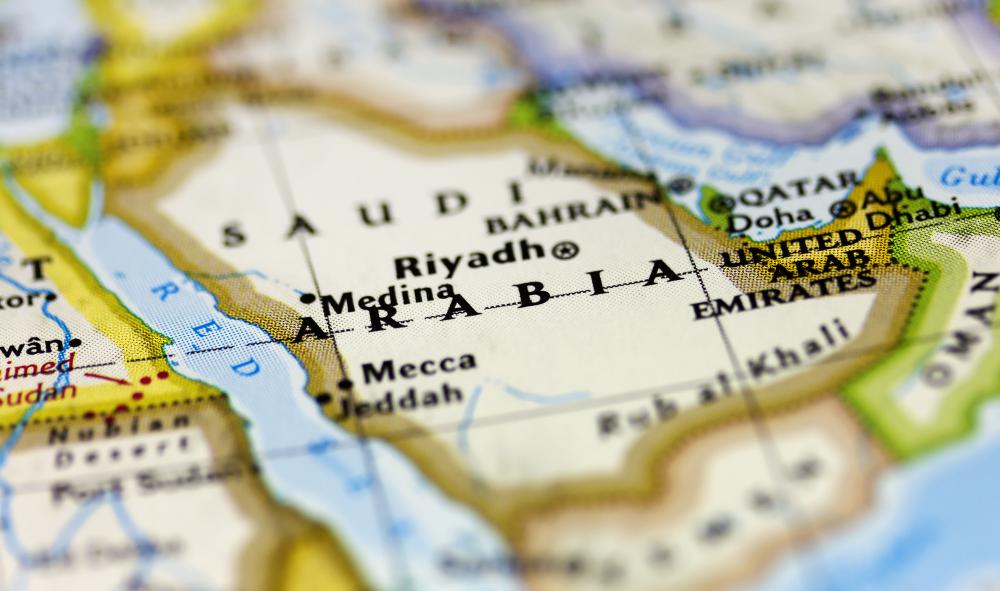At AllThingsNature, we're committed to delivering accurate, trustworthy information. Our expert-authored content is rigorously fact-checked and sourced from credible authorities. Discover how we uphold the highest standards in providing you with reliable knowledge.
What is the Heat Index?
Those who live in hot, humid climates have all heard the lament, “It’s not the heat, it’s the humidity!” on a particularly hot, sticky day. A heat index takes the actual air temperature and factors in the relative humidity to arrive at the temperature that the human body feels. Because humidity has a real effect on the human body’s ability to cool itself effectively, measuring the temperature a body feels under the influence of high heat and humidity is important to keep people safe from possible heat disorders.
When a body cools itself, perspiration forms on the skin and the air evaporates it. When humidity is high, since the air is already so saturated with water, the perspiration is not evaporated as quickly, or not at all. Therefore, when it is not only hot, but also humid, the temperature feels hotter because the body cannot cool itself effectively.

The heat index is calculated in the shade, with a light wind factored in. Direct sun exposure can raise the index by as much as 15 degrees Fahrenheit (about 8 degrees Celsius). Relative humidity is the ratio of the amount of water vapor in the air to the greatest amount of vapor possible. The formula is very complicated, especially for non-mathematicians, so numerous heat index charts are available on the Internet. In most areas hot and humid enough to require an index of this kind, weather forecasters usually give the actual temperature along with the heat index temperature.

For example, the heat index temperature for a 90°F (32°C) day with a relative humidity of 90% would be 121°F (49°C). At 80% humidity, a temperature of 95°F (35°C) would feel like 133°F (56°C). The highest recorded heat index reading was on 8 July 2003 in Dhahran, Saudi Arabia. The relative humidity was 67% and the temperature was 108°F (42°C), making it feel like 176°F (80°C). When one compares a desert city with a relatively high temperature to a southern city near the ocean with a lower temperature, it may feel hotter in the southern city because the relative humidity pushes the index up.

The heat index, which is called the humidex in Canada, is a useful tool in predicting heat disorders. By calculating the heat index, health officials can issue helpful warnings to citizens about potential dangers from the heat. Temperatures from 90° to 105°F (32° to 41°C) can contribute to sunstroke and heat exhaustion. From 105° to 130°F (41° to 54°C), one can add heat stroke to the list of possible heat complications. During extended periods of exposure to temperatures over 130°F (54°C), heat stroke is nearly guaranteed.
Frequently Asked Questions
What exactly is the heat index?

The heat index is a measure that combines air temperature and relative humidity to determine how hot it feels to the human body. It reflects the perceived temperature rather than the actual air temperature, accounting for the body's reduced ability to cool itself through perspiration in humid conditions.
How does high humidity affect the heat index?
High humidity increases the heat index because moist air slows the evaporation of sweat from the skin, which is the body's natural cooling process. When humidity is high, the body feels warmer than the actual air temperature, as sweat does not evaporate as quickly, leading to a higher heat index.
Why is the heat index important to monitor?

Monitoring the heat index is crucial for health and safety reasons. A high heat index can lead to heat-related illnesses such as heat exhaustion or heat stroke, especially in vulnerable populations. According to the National Weather Service, it provides guidance on potential danger levels for outdoor activities.
At what heat index level does it become dangerous?
It becomes dangerous when the heat index reaches 90°F (32°C) or higher. The National Weather Service categorizes heat index values above 105°F (41°C) as "dangerous" and above 130°F (54°C) as "extremely dangerous," with recommendations to avoid outdoor activities and stay hydrated.
Can the heat index be used to predict the likelihood of heatwaves?
The heat index is not a predictive tool for heatwaves but rather an indicator of current conditions. Meteorologists use it to assess the immediate impact of heat on the public. However, climate models and weather forecasts can predict the likelihood of heatwaves, which may include projected heat index values.
How can I find out the current heat index for my area?
You can find the current heat index for your area by checking local weather reports, visiting the National Weather Service website, or using a weather app on your smartphone. These sources update the heat index regularly, providing the latest information to help you plan your day and stay safe.
AS FEATURED ON:
AS FEATURED ON:















Discussion Comments
The method of determining Heat Index is not given. You say that a temperature of 90F feels like 121F at a humidity of 90 percent. How?
I live in Alabama and the heat index is treacherous. Last week, the heat index here was 115. Sometimes it is so bad, we try not to go outside unless we just have to! The heat index today is only 101 so I guess that is more bearable.
Post your comments